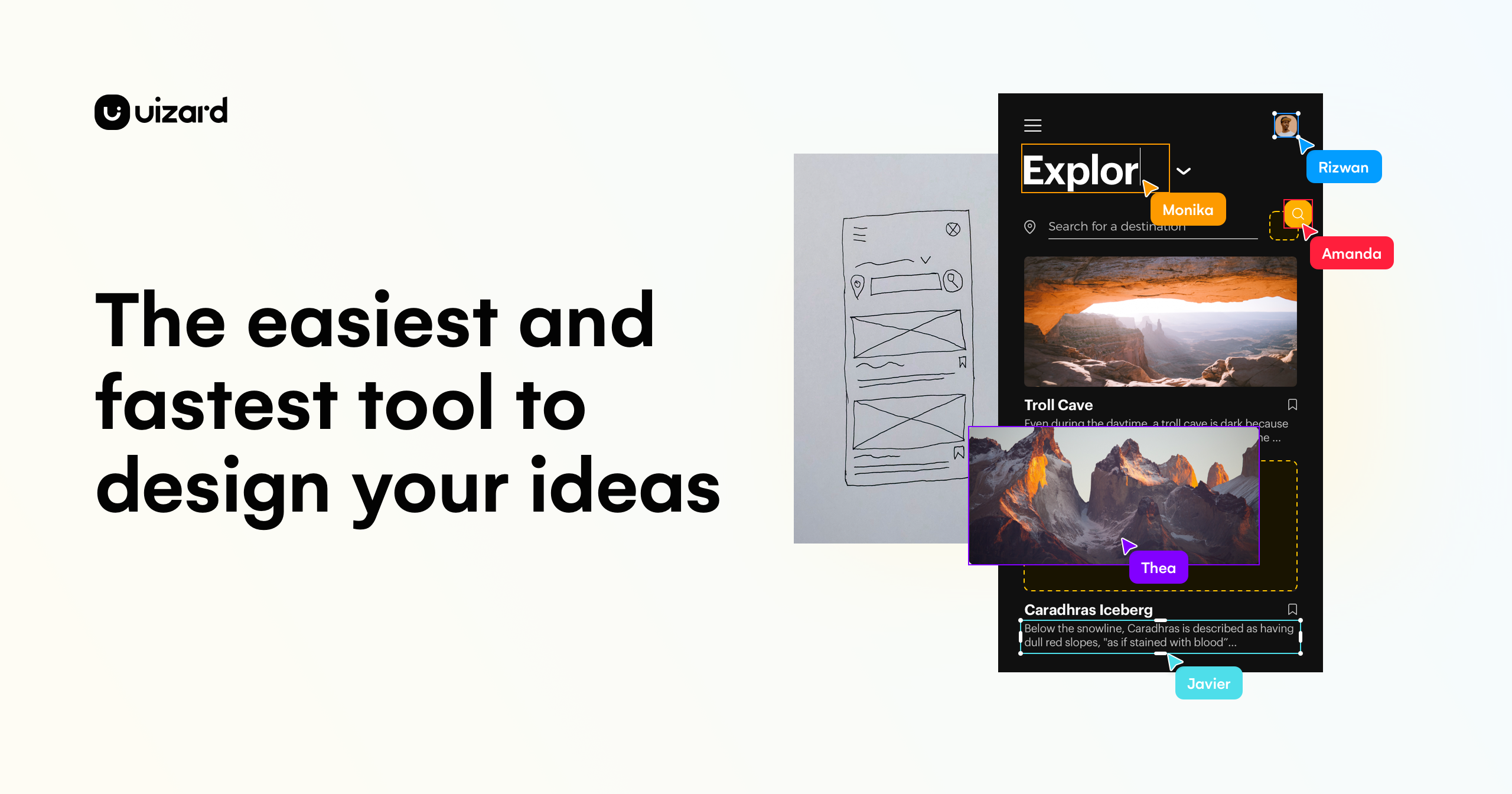
What is Uizard
Uizard is an AI-powered UI design tool that transforms ideas, sketches, and screenshots into digital prototypes instantly. It leverages generative AI to automate the design workflow—enabling users to ideate, build, and iterate wireframes, mockups, and multi-screen prototypes with natural text prompts or simple visual inputs. Uizard combines intuitive drag-and-drop editing, real-time collaboration, and code handoff options to empower both technical and non-technical teams to move from idea to mockup in minutes.
Key features
• Autodesigner 2.0 that creates multi-screen, editable designs using plain text prompts
• Wireframe scanner that digitizes hand-drawn wireframes into editable digital layouts
• Screenshot scanner that converts UI screenshots into interactive mockups
• Drag-and-drop editor supporting immediate modification of components and layouts
• Real-time collaboration functionality allowing multiple team members to contribute simultaneously
• Visual fidelity control to switch easily between low-fi and high-fi design views
• Template library covering mobile, web, tablet designs and component blocks for rapid assembly
• Export options offering CSS or React code for smooth developer handoff
• Brand kit generation to maintain design system consistency across projects
• Integration with existing design workflows via Figma plugin support
Pros
• Rapid transformation from sketches or prompts into polished UI prototypes
• Highly accessible for non-designers through intuitive visual tools and prompt-based features
• Collaboration features eliminate design bottlenecks by enabling teams to work concurrently
• Library and theme tools accelerate brand-aligned UI generation
• Export capabilities simplify handoff to engineering with clean code snippets
• Flexible fidelity adjustments facilitate both ideation speed and presentation polish
Cons
• Some AI-generated layouts may require manual refinement to meet specific brand standards
• Free or lower-tier accessibility to AI generation may be limited
• Exporting to other design tools may still require workaround for full fidelity
• Advanced custom styling may not be as granular as in specialized UI tools
Who is using Uizard
Uizard is popular among product managers, UX designers, startup founders, and marketing professionals seeking fast, polished prototypes without depending on heavy design or development resources. Its fast turnaround and flexible editing make it especially useful for agile teams, non-design-savvy contributors, and cross-functional stakeholders who want to visualize ideas quickly and iterate collaboratively.
What makes Uizard unique
Uizard distinguishes itself with its genuine “no-design” philosophy powered by generative UI intelligence. It entirely removes the barrier between an idea and a mockup through tools like Autodesigner 2.0, wireframe conversion, and screenshot scanning. Unlike traditional design editors, it combines speed, automation, and developer automation all in a single interface—without requiring design expertise.
Moreover, Uizard balances this speed with structure by incorporating brand kit generation, component templates, and fidelity toggles. Teams don’t just get fast prototypes—they get consistent, scalable design systems and clean code exports included. Its founding in machine learning research (pix2code) and widespread adoption among startups, product teams, and UX professionals makes it both trustworthy and future-facing.
Conclusion
Uizard is an innovative, AI-driven design platform that allows teams to turn ideas into high-quality, shareable prototypes in moments. With smart tools for prompt-based generation, sketch digitization, real-time collaboration, design system consistency, and code handoff, it enables rapid iteration and production of user interfaces. While some fine-tuning may be needed for fully tailored designs, Uizard’s power lies in its speed, accessibility, and design-to-development streamlining. For agile teams, non-designers, and anyone needing fast visual workflows, Uizard delivers exceptional efficiency and creativity.
Visit website